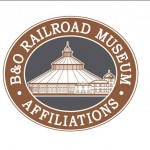kudos, Affiliates!
In these tough economic times, it’s nice to see some bright spots.
Here’s our congratulations roundup for November 2009.
The Lincoln Park Coast Cultural District (Newark, NJ) received $300,000 from the New Jersey Board of Public Utilities for job training in environmentally-friendly construction.
The National World War II Museum (New Orleans, LA) received $25 million from the Department of Defense to expand the museum and construct the United States Freedom Pavilion, an expansion that will include an exhibit focused on the American home front during the war.
Museum of the Rockies (Bozeman, MT) accepted a donation from Eleanor “Ellie” Hamilton Povah of more than 1,200 items from her family’s collection on Yellowstone history and gave a gift of $250,000 over five years to the museum, which will be used to match federal funds and cover the costs of the collection’s care, storage, cataloguing and preservation.
The Museum of Science and History (Jacksonville, FL) was awarded $304,737 through the Cultural Service Grant Program. The program is funded through the city and administered by the Cultural Council of Greater Jacksonville.
Michigan State University Museum (East Lansing, MI) has been awarded $319,284 from IMLS to support the “Oral History in the Digital Age” project. Michigan State University Museum, will partner with the Smithsonian Institution Center for Folklife and Cultural Heritage, the Library of Congress’ American Folklife Center, the American Folklore Society, and the Oral History Association to recommend standards and best practices for digital oral history.
Congratulations and good luck to the National World War II Museum (New Orleans, LA) on their $60 million expansion and grand opening, November 6-8.









